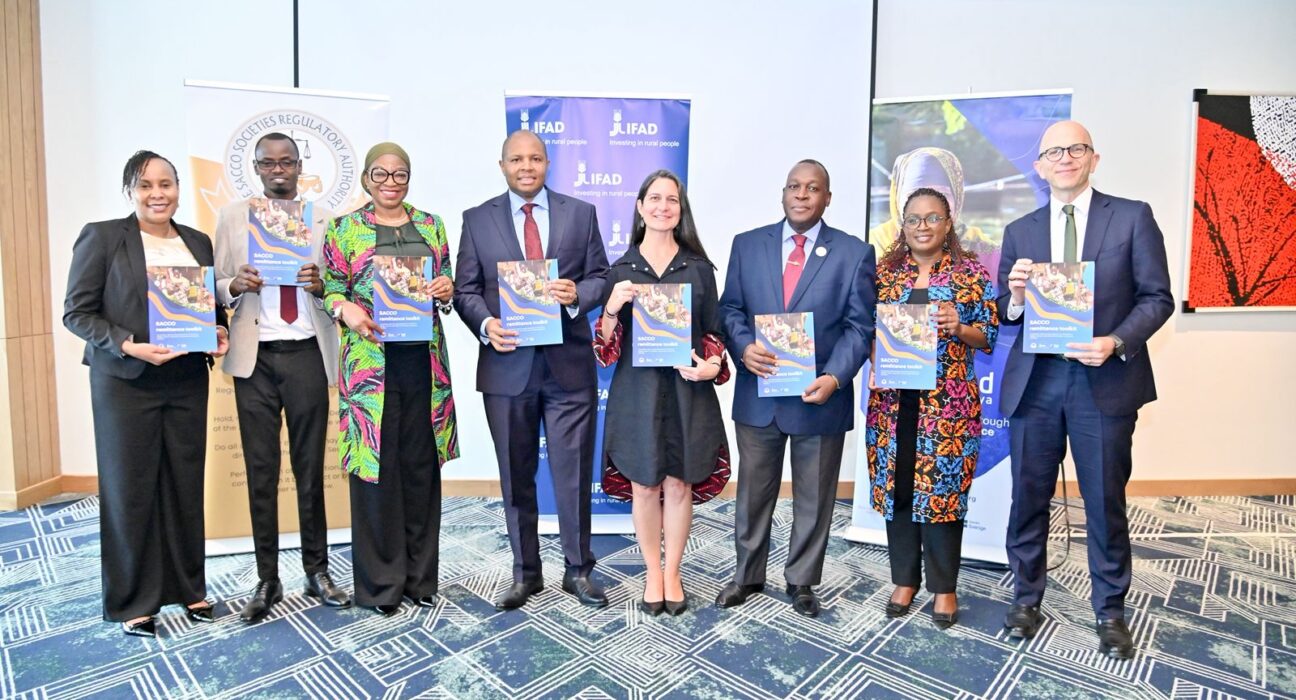Kenya’s Sacco Societies Regulatory Authority (SASRA) has unveiled a comprehensive remittance toolkit designed to help Savings and Credit Cooperative Organisations (SACCOs) enter and expand within the cross-border money transfer market. The new guide, launched in partnership with the International Fund for Agricultural Development (IFAD) and FSD Kenya, is expected to boost competition in the remittance sector and equip SACCOs with the institutional capacity needed to capture a larger share of diaspora inflows.
The toolkit arrives at a time when remittances remain one of Kenya’s most resilient and important foreign-exchange sources. Official data places diaspora inflows at nearly US$5 billion in 2024, supporting households, rural livelihoods and balance-of-payments stability. Despite this strong performance, only a small fraction of the money sent home by Kenyans abroad currently moves through SACCO channels. The regulator says this presents a major opportunity for cooperatives, many of which already serve millions of members who rely on them for saving, lending and other financial services.
According to sector statistics cited during the launch, SACCOs processed more than seven million transactions worth KSh17.46 billion through their existing money transfer systems. However, the bulk of these are domestic transfers, with international remittances still underutilised due to capacity gaps, compliance requirements and limited product integration with global payment networks. The new toolkit seeks to address these challenges by laying out a structured pathway for SACCOs to design, pilot and scale remittance products in line with global standards and regulatory expectations.
SASRA Chief Executive Officer David Amiani Sandagi said the current remittance landscape offers cooperatives a strong entry point as demand for affordable and secure transfer channels continues to grow. He noted that many SACCOs already enjoy high trust among Kenyan households, offering them a competitive advantage if they choose to diversify into cross-border financial services.
“There is a significant opportunity for SACCOs to leverage cross-border remittance and position themselves as trusted international remittance providers,” Sandagi told delegates during the launch. “With proper systems, internal controls and compliance frameworks, SACCOs can become an integral part of Kenya’s remittance ecosystem while strengthening their financial position.”
The toolkit outlines detailed operational steps for SACCOs seeking regulatory approval to offer remittance services, including governance requirements, risk-management procedures, anti-money laundering compliance and partner selection criteria. It also provides guidance on building internal capacity, integrating technology platforms, securing international partnerships and setting up customer support channels for diaspora users.
Sector analysts say the move could potentially reshape the cooperative financial landscape by opening up new revenue streams for SACCOs, particularly at a time when traditional lending margins have come under pressure. Many urban and rural cooperatives rely heavily on loan interest for income, leaving them vulnerable to shifts in credit demand and member liquidity. Cross-border remittances present an alternative opportunity that could help SACCOs diversify their balance sheets and stabilise revenue over time.
FSD Kenya and IFAD, which have been supporting long-term reforms in the cooperative sector, view digital financial inclusion and alternative delivery channels as central to strengthening SACCOs’ sustainability. Their collaboration with SASRA is part of ongoing efforts to modernise cooperative institutions, enhance regulatory compliance and promote better service delivery to the millions of Kenyans who rely on SACCOs for financial services.
The remittance toolkit goes beyond compliance and operations, offering SACCOs practical advice on product design, customer engagement and market positioning. For instance, the guide encourages SACCOs to assess diaspora market segments, understand the needs of Kenyan migrants and build partnerships with global remittance firms that can support last-mile delivery. It also highlights the importance of transparent pricing, strong ICT systems and streamlined onboarding processes to attract users seeking reliable, low-cost transfer options.
SASRA said it expects the toolkit to contribute to long-term institutional strengthening across the cooperative sector. By standardizing internal controls and encouraging good business practices, the Authority aims to raise operational resilience, reduce compliance risks and improve the capacity of SACCOs to innovate responsibly.
The regulator has repeatedly emphasized the need for SACCOs to modernize their systems as member expectations evolve. Digital adoption in the cooperative sector has been rising steadily, driven by mobile banking, automated loan processing and integrated member management systems. However, international remittances represent one of the key areas where SACCOs have lagged behind commercial banks and fintechs due to regulatory complexities and the need for specialized technical capabilities.
Industry observers say the toolkit may help bridge this gap by providing a structured roadmap that SACCOs of different sizes can follow, rather than leaving each institution to independently navigate unfamiliar regulatory and operational terrain. Smaller SACCOs, in particular, may benefit from the framework as they look for cost-effective ways to enter new product segments without compromising compliance.
SASRA’s leadership reiterated that strengthening SACCO participation in the remittance market aligns with national financial inclusion objectives. Cooperatives have historically played a major role in deepening access to credit and savings, especially outside major urban centers. Expanding their ability to offer cross-border remittance services could improve convenience and reduce costs for rural households that currently depend on urban-based agents or commercial banks to receive funds.
As Kenya’s remittance inflows continue to grow, the Authority believes SACCOs can become more active contributors to the market, provided they adopt robust systems and align with international best practices. The newly launched toolkit is expected to be rolled out across the sector through capacity-building sessions, technical training and awareness programmes led by SASRA and its partners.
The Authority said the initiative underscores its commitment to supporting innovation, safeguarding member funds and strengthening governance structures in the SACCO subsector. While the impact will vary depending on the adoption rate across different institutions, the regulator is optimistic that the guide will equip cooperatives with the tools they need to seize emerging opportunities and compete effectively in the evolving financial landscape.




